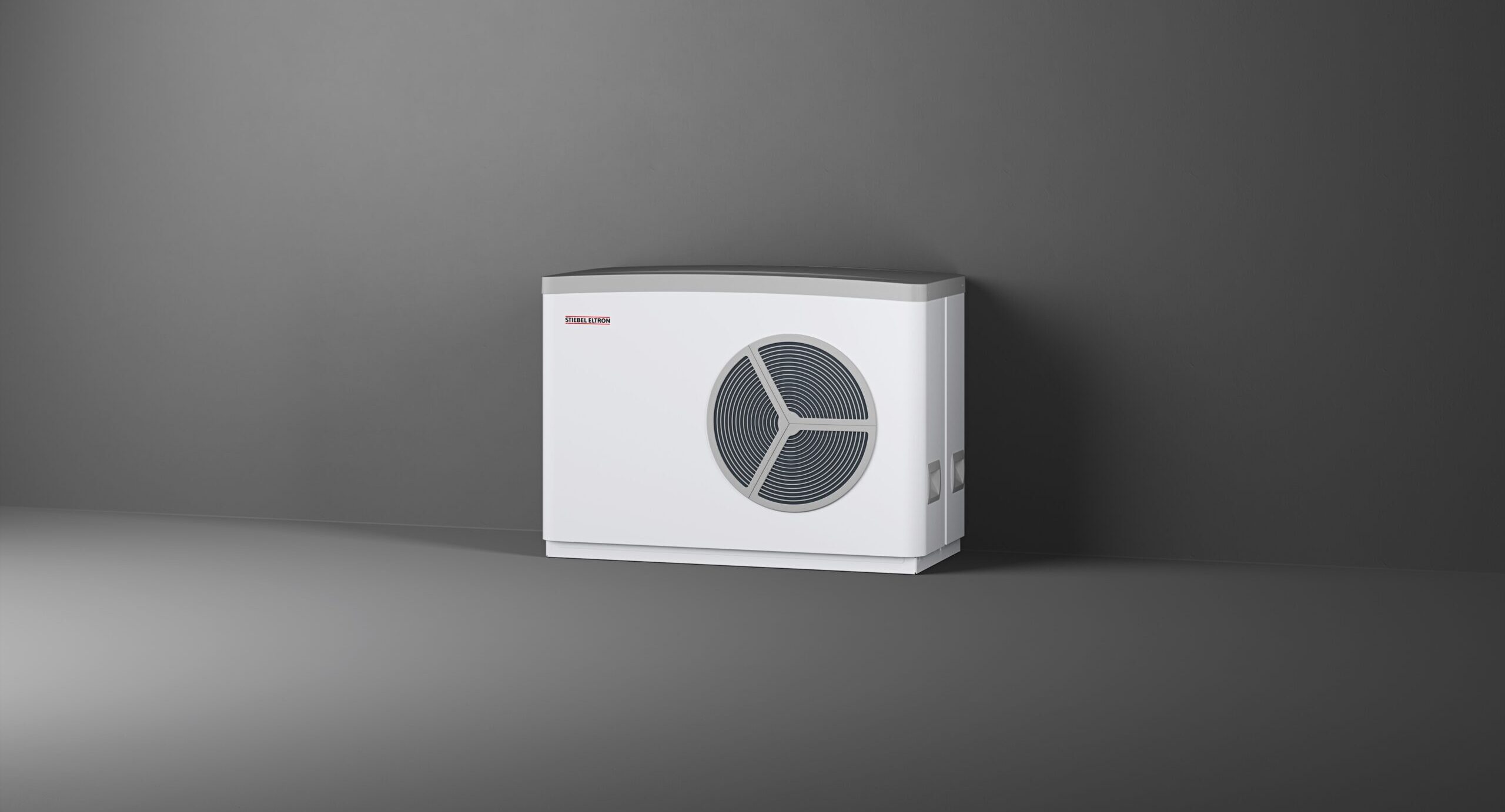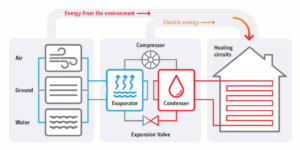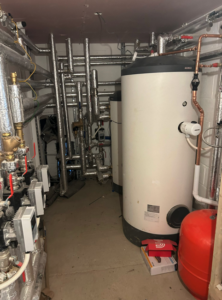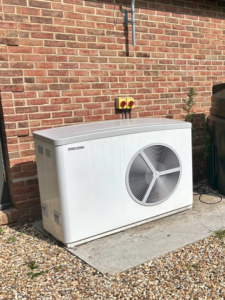
Heat pumps are versatile devices that can significantly reduce energy costs and carbon footprints. By harnessing the natural heat present in the environment, they provide a sustainable alternative to conventional heating and cooling systems.
Heat pumps work by transferring heat from one place to another. During the colder months, they extract heat from the outside air, ground, or water, and transfer it indoors to warm the home. Conversely, in the warmer months, they reverse the process, removing heat from the interior and releasing it outside to cool the home. This dual functionality makes heat pumps an efficient choice for year-round climate control. They operate using electricity and can be integrated with existing heating emitters such as radiators or underfloor heating, offering flexibility in home applications.
Air source heat pumps are among the most common types used in residential settings.
An air source heat pump (ASHP) is a device that transfers heat from the outside air to the inside of your home, or vice versa. It can be used for both heating and cooling, depending on the season and your preferences. An ASHP consists of two main components: an outdoor unit that contains a compressor and a fan, and an indoor unit that distributes the heated or cooled air through ducts or pipes.

Heat pumps are often explained as an air conditioner unit or refrigerator in reverse – they have a heat exchanger that extracts energy from the air and stores it in water for use in your home.
Air source heat pump systems have an outdoor unit that extracts heat from the outside air and transfers it to indoor stores of water for your heating circuit – be that radiators or underfloor heating – and hot water needs.
The pros of heat pumps are:
Lower carbon emissions – electricity is an increasingly green source of energy generated by renewable sources.
Some people believe heat pumps aren’t suitable for the UK because of cold weather and poor insulation. However, with the right design and installation, such as using larger radiators, they can work well even in older homes. Heat pumps are efficient at temperatures as low as -25°C. They use a refrigerant that absorbs heat from the air or ground, turns into a gas, is compressed to generate heat, and then transfers this heat to your home’s heating system. As long as the outside temperature is above -50°C, a heat pump will continue to operate.

The first requirement is an outdoor area for the heat pump unit, needing just a few square meters with enough space for air circulation. Units are typically installed near walls, adhering to installation guidelines regarding minimum distances from buildings or barriers.
It is always good practice to install an air source heat pump where noise is unlikely to be an issue when windows are open.

You will also need some space inside your home for a hot water cylinder, the heat pump controller and other smaller accessories like expansion vessels. In many cases most of these components are housed in a single “system cylinder” which holds all the tanks and hydraulic components for your heat pump system in one unit.
The exact space required depends on how big your property is – bigger homes need more space for hot water storage for example. However, for smaller homes we see an increasing number of compact installations fitted into an under-stair cupboard, old airing cupboard or in the eaves space of a loft.
Heat pumps are most efficient at lower water temperatures (35-55°C) compared to boilers (60-80°C). These temperatures suit underfloor heating or fan coil radiators, but existing emitters can still offer savings.
Modern homes (built from 2000 onwards) have low heat losses and are ideal for heat pumps due to their better insulation. They often require minimal changes to adapt to an air source heat pump system.
Older homes benefit more from a heat pump with increased insulation. To qualify for BUS funding, (inset link to BUS page) address recommendations on your Energy Performance Certificate (EPC). A larger heat pump may be needed, and you must ensure adequate electrical supply. Heat pumps generally reduce running costs by using less energy to produce equivalent heating as fossil fuel boilers.
If your efficiency is below parity with fossil fuels, costs may rise. However, we can guide you through designing an efficient system for your home and connect you with local contractors. We have successfully applied air source heat pumps to various buildings with high efficiencies.
Compared to traditional boilers, air source heat pumps can be slower to respond to any changes made to the heating programme because they operate at lower temperatures. This can be advantageous if users adapt to this method of heating.
It is generally recommended to leave heat pumps running without switching them off completely to maintain the temperature of the home. Instead of turning the heating off at night or when away from home, as might be done with a conventional heating system, setting a lower temperature for these periods ensures that the system only has to increase a few degrees during active heating periods. This approach can result in greater overall comfort and improved energy efficiency for the heat pump, leading to potentially lower heating bills.
As heat pump systems typically produce water that is not as hot as a boiler, you may find that if you want a very hot bath or shower you need to adjust the mix from your taps to use a little less cold water. However, modern high temperature air source heat pumps do have the ability to produce water at 65-70°C so if you have any concerns about hot water temperatures you can discuss that with us during the design of the system. Bear in mind that the lower you run temperatures, the more efficient your system will be.

In most cases heat pumps for residential property don’t require formal planning permission as they are considered a permitted development. However, permitted development itself has some caveats that must be observed and planning permission will be required if your property is a listed building, in a conservation area or world heritage site.
It is also important to be aware of the clearance requirements that different kinds of heat pumps typically stipulate to ensure safety, efficient operation and the avoidance of any noise nuisance.
For further information contact us
Our Reviews